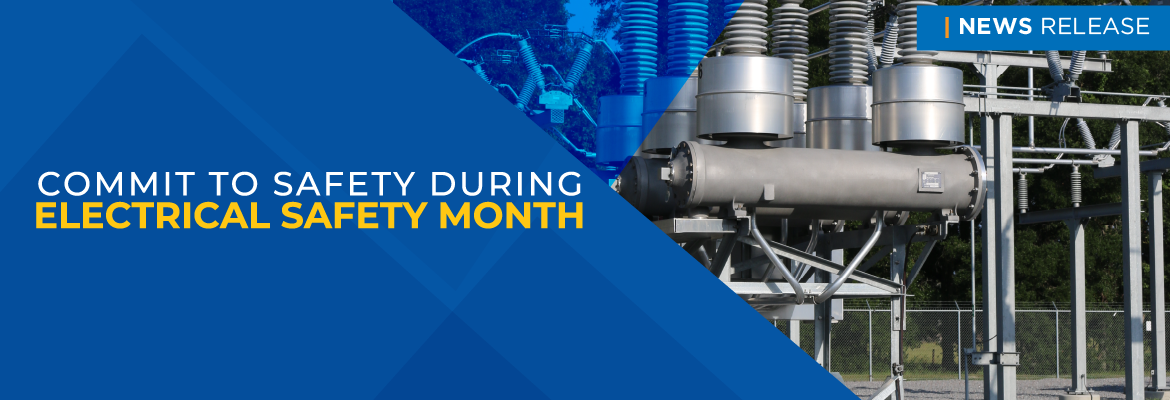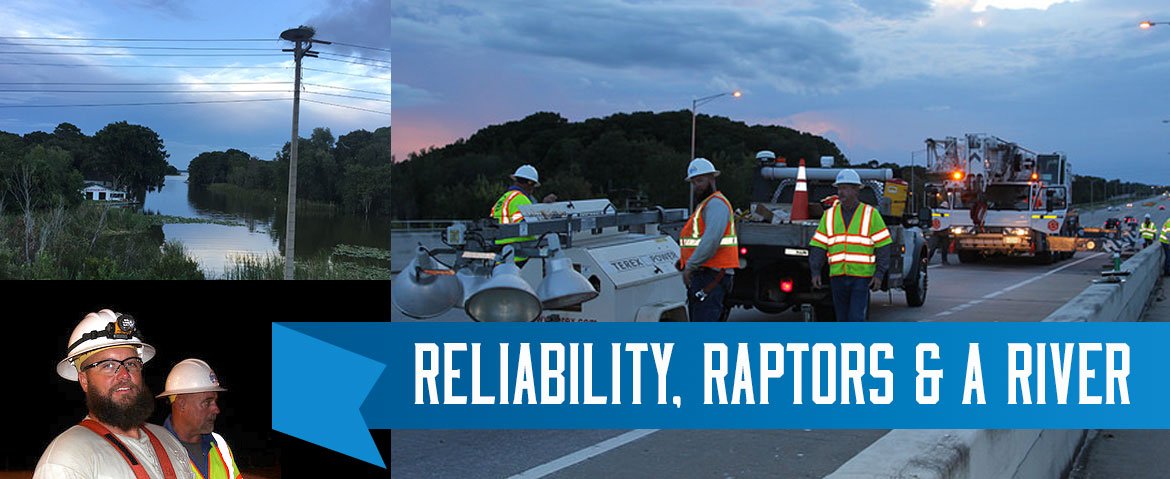SECO Energy first electrified homes and farms in Lake, Sumter and Marion Counties in 1938. The not-for-profit electric cooperative has grown alongside the counties it serves, and now provides safe, affordable, reliable power to 200,000 homes and businesses across Central Florida.
Currently, 63,000 of those members live in Lake County, famous for its vast number of lakes, rivers and streams in its 1,100-square mile area. In fact, almost 20 percent of the county is covered by water. SECO’s Operations crews responsible for building and maintaining SECO facilities must adapt to the unique watery landscape.
Years ago, linemen attached climbing spikes to their boots and scaled poles on a daily basis, and facilities were installed using the most direct route possible. Lines would span small bodies of water, and poles were sometimes installed in water. Currently, one such pole rises out of Tavares’ Dead River, and a SECO crew was recently transported to work on it using a 75-ton crane.








This particular pole is concrete, supports a main feeder line and has an osprey nesting dish installed at the top. Dishes offer nesting space for raptors that inhabit Lake County waterways. The longstanding osprey nest on this dish was inactive and was collecting debris from years of inactivity. The rotting debris was falling off the dish and making contact with the feeder line and caused a feeder outage for 250 SECO members.
CEO Jim Duncan stated, “Improving reliability for SECO members served by this feeder was the cooperative’s immediate concern. Operations crews restored power to these members in under an hour by temporarily rerouting or backfeeding power through a different feeder line, but a permanent fix was needed. To complete this system improvement project, crews needed to replace the insulators, add new conductor line, and remove the rotting debris from the osprey dish – all while suspended 45 feet in the air above the Dead River.”
SECO Energy places a top priority on Safety – a cooperative Core Value. Safety was the first consideration during the planning and execution of this project. Standard utility bucket trucks aren’t equipped for this type of work. To comply with safe work practices, SECO needed heavy equipment, employing a 75-ton crane and attaching a crane basket for the team’s 45-foot ascension over the river to safely access the facilities.
[embedyt] https://www.youtube.com/watch?v=0U1uGCfBhDc[/embedyt]
Stationing a 75-ton crane near the marshy river bank was impossible. The pole would have to be accessed from the river overpass on Highway 441. With assistance from the Florida Highway Patrol and permitting from Lake County, the right two lanes were closed after 7 pm. The crane rolled in while SECO personnel set-up a roadside job site.
Line techs from SECO’s Eustis Operating Center – Nathan Rioux and Brandon Blackmon – volunteered to work suspended over the river while Sumterville line tech Logan Land observed from the rescue boat. Previously that day, the line was grounded and de-energized for safety.
Before work commenced, SECO personnel and crane operators secured and tested the connections from the crane to the basket that would hold the men aloft. Nathan and Brandon donned their personal protective equipment and inspected their safety harnesses that attach to the crane basket. The basket’s maneuvers were tested while empty and with the men on-board.
Once testing was complete, the hard work began. Nathan and Brandon replaced the damaged insulators and spliced in 20 feet of overhead conductor before installing new animal deterrents. Logan observed the work from the rescue boat below – keeping an eye on the alligators and fishing boats. The team removed all nest debris that caused the power outage. With a cleaner, safer dish now available, ospreys will soon build anew.
SECO’s Safety and Risk Manager was on-site to oversee the project from beginning to end. Additional safety measures for this project included directing traffic away from the work site, a rescue boat staged in the river at the base of the pole and multiple SECO personnel observing the project from ground level.
Duncan added, “In the future, SECO is proposing a redesign of this feeder as underground service. This enhancement requires a St. John’s Water Management District permit, as SECO plans to bore under the Dead River.”
This project was critical to immediately improving reliability to the area and providing a safe nesting dish for osprey. The pole will remain in its current location to support existing communications cable and fiber lines belonging to other entities. The pole and nesting dish will stand available for future generations of roosting osprey making their home near the river.
View the entire album of video footage and photographs on SECO’s Flickr page.
“Like” SECO’s Facebook page and “follow” the company on Twitter for news releases and cooperative updates.





